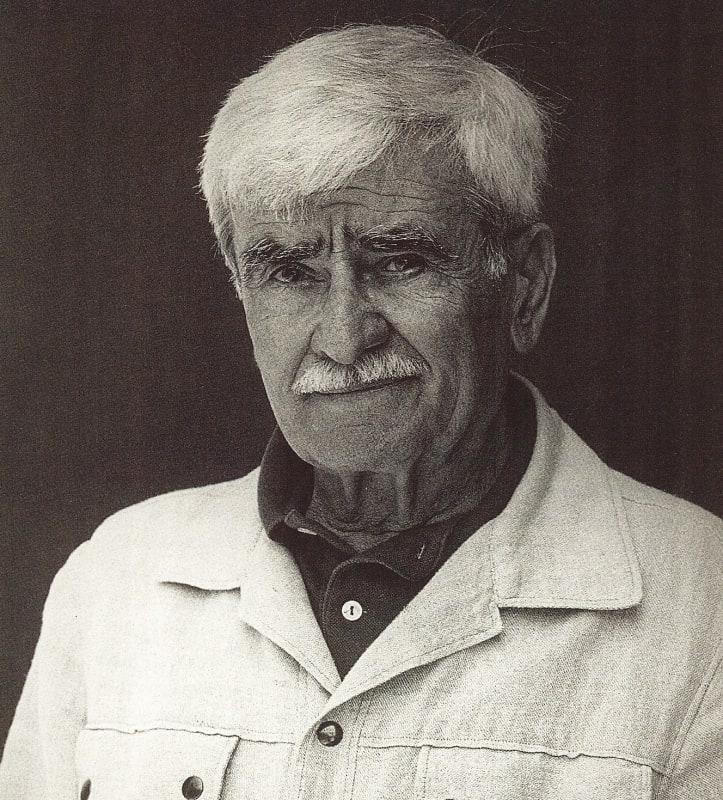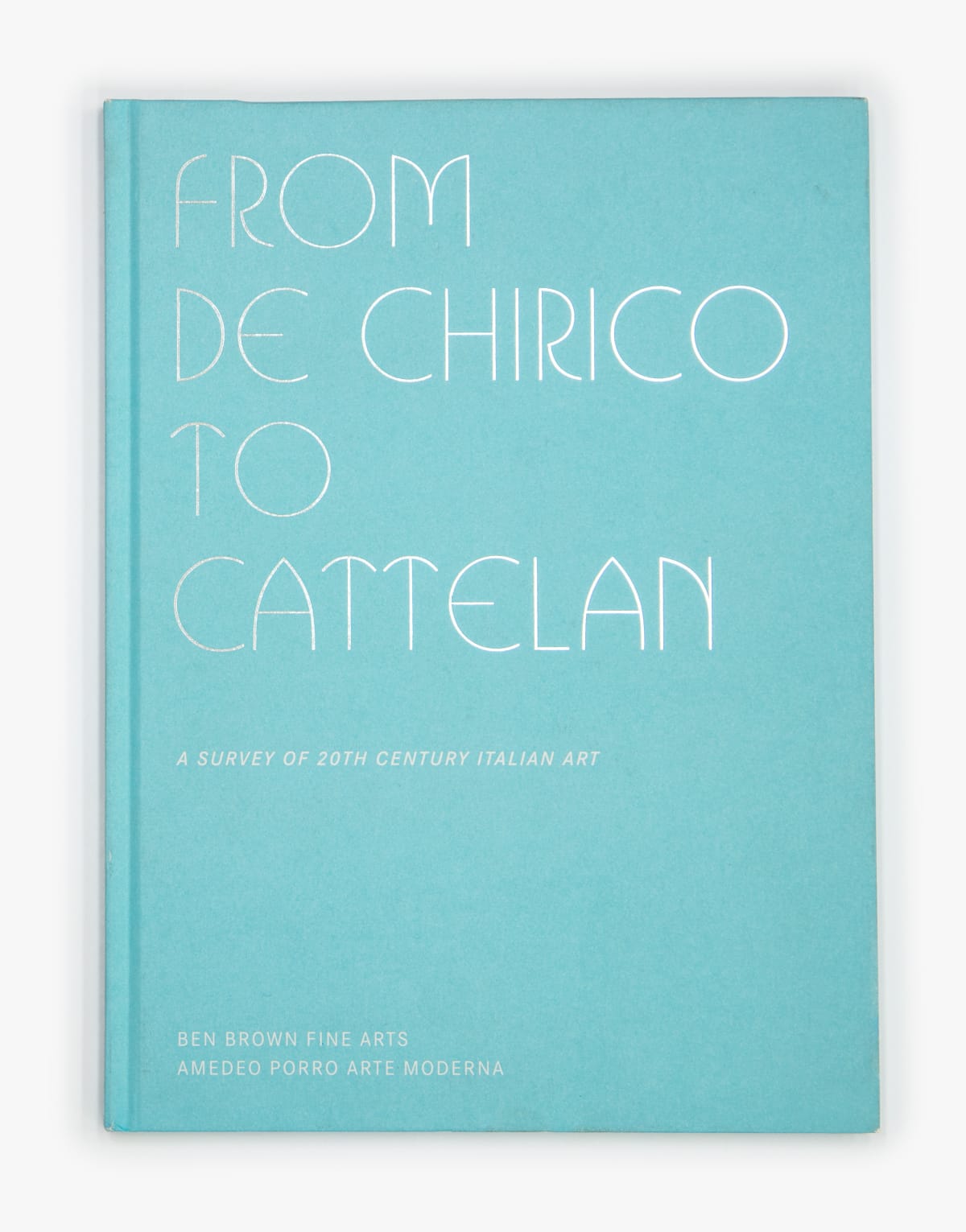Overview
Alberto Burri was born in 1915 in Città di Castello, a small town in Umbria, and died in Nice in 1995. Trained as a doctor, he served as a physician in the Italian army during the Second World War before being captured in Tunisia and interned in a prisoner-of-war camp in Texas. It was there, disillusioned and far from home, that he began to paint – a pivot that would prove permanent. He never practised medicine again.
Repatriated to Italy in early 1946, Burri set up a studio in Rome and immersed himself in painting with quiet determination. His first solo exhibition took place the following year at Galleria La Margherita, and soon after, a trip to Paris brought him into contact with the collages of Joan Miró and the tar-caked surfaces of Jean Dubuffet – works that validated his own instinct for material unruliness. Back in Rome, he exhibited with the Rome Art Club, where he encountered the legacy of Futurist arte polimaterica, or “multimaterial” art.
Burri began to experiment with thick resins and industrial pigments, producing dark, alchemical surfaces in his Catrami (tars) and organic, mottled textures in Muffe (moulds). His Gobbi (“hunchbacks”) – canvases distorted into sculptural bulges – signalled a clear break from the flat field of painting. By 1950, he was assembling burlap sacks and household linens into works he called Sacchi and Bianchi – brutal, tactile compositions that earned him swift international attention.
In 1953, Burri had his first solo exhibitions in the United States, at the Allan Frumkin Gallery in Chicago and the Stable Gallery in New York. That same year, his work appeared in Younger European Painters at the Solomon R. Guggenheim Museum. Four years later, the Carnegie Museum of Art in Pittsburgh mounted a mid-career retrospective – a rare honour for a living European artist at the time.
Burri's work would come to redefine the postwar landscape of painting. Rejecting conventional materials, he scorched, stitched, and scarred surfaces of burlap, wood, tar, plastic and metal. His Sacchi embodied raw, corporeal poetry: evoking wounds and ruin, but also repair. Though often read as a response to the trauma of war, Burri resisted that framing, insisting instead on material as meaning – on its capacity to speak of the world as it is, economically and socially.
Across series like the Combustioni plastiche and Ferri, he pioneered a new material realism that blurred painting and sculpture, influencing later movements including Arte Povera, Process Art and Minimalism. His work was both brutal and refined, meditative yet industrial – transforming damage into structure, destruction into form.
Burri participated in numerous iterations of the Venice Biennale (1952, 1960, 1966, 1984, 1988). He received the UNESCO Prize at the São Paulo Biennial in 1959 and the Critics’ Prize at the 1960 Venice Biennale. Among the many retrospectives dedicated to his work are those mounted by the Museum of Fine Arts, Houston (1963); Musée National d’Art Moderne, Paris (1972); University of California, Los Angeles (1977); and Solomon R. Guggenheim Museum, New York (1978, 2015). Burri’s work is held in the collections of the Tate, London; Solomon R. Guggenheim Museum, New York; Centre Pompidou, Paris; and the Galleria Nazionale d'Arte Moderna e Contemporanea, Rome.
Enquire
Exhibitions
Publications

